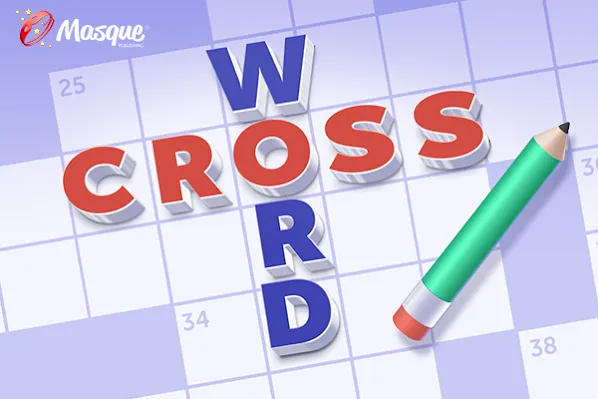'Little House,' big hit: What the enduring fascination with Laura Ingalls tells us about our yearning for the simple life
It's been 93 years since Laura Ingalls Wilder's first Little House on the Prarie book — based on her life growing up as a homesteader in the 1870s — was published, and more than 50 since the TV show inspired by it premiered back in 1974. Not that you'd know it: Reruns of the show, starring Michael Landon as Pa and Melissa Gilbert as Laura, racked up more than 13 billion minutes of viewing on Peacock last year, making it one of the most-watched shows of 2024.
The series is also getting a second life on TikTok, while Netflix recently announced that it's working on a new TV adaptation to bring a "new generation" to the LHOTP fold. As it is, there's no shortage of die-hard Laura Ingalls Wilder superfans waxing nostalgic about making maple candy in the snow and getting even with Nellie Oleson. Journalist Jo Piazza even launched an entire podcast, Wilder, in which she interviewed various guest experts about the enduring LHOTP cultural phenomenon.
Journalist and cultural critic Sara Louise Petersen was one such guest weighing in on why a series capturing the so-called simple charms of settler life some 150 years ago still has such a hold. “The story certainly speaks to our cherished American myth of rugged individualism and manifest destiny,” Petersen tells Yahoo Life of the LHOTP resurgence. And in tumultuous times, a little homespun wisdom can be appealing.
“I think when people feel lost, disillusioned or desperate, we have a very American tendency to go inward in efforts to self-optimize our way out of difficulty,” she says. “The books (to an extent) present a very gritty, dark period of history as cozy and tightly knit.”
Peterson says the books — and the TV show they inspired — continue to be so popular simply because “it's perversely easier to believe in this type of fairy tale than to do the incredibly hard work of making our current reality better on a collective level for everyone.”
Neuropsychologist Sanam Hafeez agrees that LHOTP is having a moment right now because Americans just plain want nostalgia and comfort viewing. “Many people long for simpler times and enjoy revisiting the show’s heartwarming stories [to find] a sense of peace,” she tells Yahoo Life.
What do LHOTP fans themselves have to say? Here's what they told us.
Why fans remain so drawn to LHOTP and the simple life
Author Carrie E. Pierce received a new Little House on the Prairie book every Christmas when she was growing up. “I couldn't wait to dive into it, usually reading by the light of the tree on Christmas night,” Pierce tells Yahoo Life. “As I grew, I came to appreciate the television show, watching reruns of the series well into my 20s and 30s. The series connected me to a kinder, gentler world and reminded me of what truly mattered in life, despite what the current culture dictated and demanded.”
Pierce says those values are manifold: the importance of family, an innate moral compass, the reward of hard work, self-discipline, gratitude, service to others, forgiveness, friendship and more. “Now, at age 61, I can clearly see my life (and my writing) has been made better because of Little House on the Prairie,” she says.
Another LHOTP fan, Loris Petro, tells Yahoo Life that the thing that drew him to the show was “how it portrays community and resilience." He explains: "It makes you think about the way we handle challenges today, and it reminds you of the value of turning to the people closest to us when things are rough.”
The show is notably unafraid to address harsh issues (disease, death, crop failure, the usual), which Petro finds “quite refreshing."
"Today, everything seems to be about marketing a perfect life, smiling and winning all day long,” he says. “Little House reminds me that people connect more with struggle and truth. … That’s where real stories live, not in some glossy filter.”
And speaking of filters …
How prairie-chic went from pioneers to Instagram tradwives
Given all of this continued glamorizing of the LHOTP aesthetic — and its tropes like milking cows, birthing babies, baking from scratch, etc. — Petersen can't help but see a throughline from Wilder’s tales to today’s tradwives. “So many tradwives look like extras from Little House, and so many mimic that cozy, homey feel the show and books evoke," she says.
If you’re unfamiliar, tradwives (short for “traditional wives”) are a particular, fascinating brand of social media influencers (Ballerina Farm's Hannah Neeleman being the most well-known example) who perpetuate extreme ideals of homemaking, motherhood and marriage. They’ve likely appeared in your feed; they appeal to the algorithm because they’re beautiful, constantly baking and live in impeccably curated rustic-chic homes. But not everyone will agree with the conservative values that typically underpin their content, or the notion that the past should be romanticized.
“I think gingham, calico and, like, reclaimed wood are visual shortcuts to believing in the very false idea of a time that was better — for pretty much no one,” adds Petersen.
After all, the books take place in the late 1800s. The Jim Crow era was just beginning, women couldn't vote and antibiotics had yet to be discovered — to name just a few, um, issues. Wilder’s books contain scenes that are dehumanizing toward people of color, and her name was removed from her eponymous book award in 2018 for this reason.
The bright side
So, is this all just an uncomfortable throwback to what some over-value as a so-called "simpler time”? Or are there actual good-for-you lessons we can take away from LHOTP that still apply?
“Of course!” says Petersen. She points to "food sustainability, ecological preservation, divesting from screens and reclaiming our time" as LHOTP-aligned values that are “not unique to tradwives."
"Little House on the Prairie was more progressive than many may remember, often addressing issues like racism, disability and women’s rights in ways that were ahead of its time," Hafeez adds. She notes that strong female characters like Caroline and Laura Ingalls challenged traditional gender roles of the time by pursuing education, independence and leadership.
What's more, Hafeez says, “the current fascination with Little House on the Prairie and simple living aesthetics teaches important concepts, such as slowing down life's pace and spending more time outdoors,” which studies show can help improve mental health.
But simplicity isn’t about donning a perfect gingham apron to prepare the sourdough pancakes in your bizarrely spotless kitchen. “Real simplicity,” Hafeez continues, “means living according to your values rather than displaying curated spaces and fashion.”
She points out that “people who pursue an idealized slow-living lifestyle often face new pressures to perform simplicity instead of truly experiencing it.” There's no harm (or shame) in enjoying the LHOTP books and series as mere entertainment rather than a guide to how you should be living. But if you do come away inspired to live a life that's a little more Walnut Grove and a lot less rat race, Hafeez suggests finding ways "to disconnect, create and slow down without turning it into another unrealistic expectation.” Bottom line: There's no prize for churning butter.
Solve the daily Crossword

